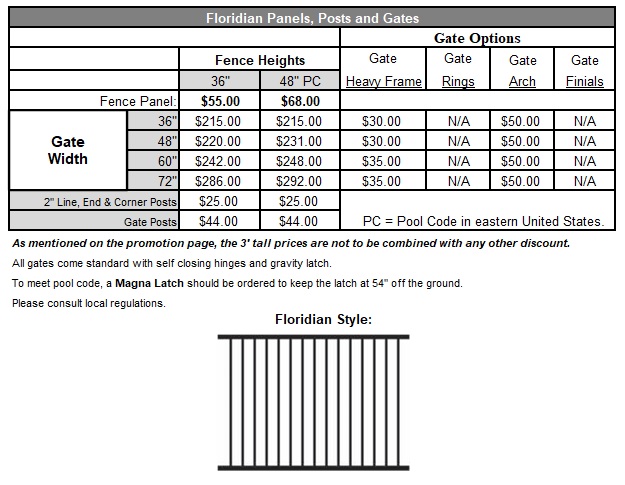A swimming pool is a great feature for any property. Whether it’s an underground or above the ground pool, it can transform your backyard into an outdoor resort. It’s a great place to spend some quality family time, have fun with friends or simply enjoy it during the hot summer months. But What about swimming pool without pool fencing?
A non properly protected swimming pool can be the cause of family tragedies. According to the CPSC and Pool Safely, nearly 200 children (younger than 5) drown in pools each year and more than 3000 children suffered non-fatal drowning injuries that required emergency department treatment.
The numbers are shocking but fortunately these tragedies are preventable. CPSC recommends that one of the best ways to prevent this injuries is to use pool fencing. Good pool fencing should prevent young children from accessing the pool unattended and must adhere to certain safety standards, as we will see below.
So if you are a pool owner, you should know by now that a pool fencing can save your child’s life.
Which is the safest pool fence?
Pool fencing are manufactured in several different types, using a variety of materials. The most common are aluminum, steel, glass and vinyl /PVC.
Regardless of the type you choose, the pool fence has to adhere to some safety standards. Different states have slightly different rules and regulations but according to I.C.C pool safety standards specify the following:
Pool Fence Safety Guidelines

Best DIY Pool Fencing Type?
It is widely accepted that the easiest to install pool fences that also meet the safety standards are pool fences. Aluminum pool fences have several advantages compared to the other types including:
They are easy to install
There are various pool fencing options that are also code friendly, helping you avoid hassles or even uninstallation because your fencing choice breaks the code.
They are suitable for all types of ground
Aluminum fences can also be racked up a slope, so if the area around your pool isn’t on level ground, you won’t have any problems.
Easy to maintain
Aluminum fencing needs little to no maintenance compared to other materials that may rust, bow, rot, grow old or decay over time.
Cost Effective
DIY aluminum pool fences are cost effective compared to other types of fences. Besides the initial installation cost, they require no extra maintenance making them the best choice for the long term.
Durability
Aluminum fences can withstand a variety of weather conditions and this means that they last longer than wood or any other pool fence type.
Choosing an aluminum pool fencing style
There are a number of fence styles to choose from as you can see below. For your reference you can use the table below which shows the most common BOCA codes and how these apply to the different fence types.
*Needs bottom rail flush with bottom of pickets in 54″
**Needs bottom rail flush with bottom picket in 60″


Pool Fence DIY Quickly Safety Installation Tips
Installing your aluminum pool fence is not difficult but it needs some preparation work in advance. Our pool fence installation guide has detailed instructions about the process but before getting your hands dirty, take into account the following tips:
Get permission from local authorities – Before starting your installation project, make sure that you check with your municipality to ensure what you plan to install is according to your local safety standards and local zoning laws. In addition, check with HOA (Home Owner’s Association) for any guidelines they may have regarding the type and color of fence you can install.
Check where utilities (pipes, wires) are installed – There are cases where fence posts need to go underground so before digging make sure that the ground is free from pipes and wires. Besides risking creating a damage, you don’t want to install your fence directly above them since in case of repair work, your fence will have to be removed.
Draw your installation plan on paper – Don’t count on your rough measurements but create a detailed plan on paper. Identify where to place the gates and posts taking into account that you need to have 3 to 4 feet free around the edges of the pool.
Tools you might need. Typical items include: String Line, Wooden stakes for each Corner, End and Gate Post location, Post Hole Digger, Concrete, Screw Driver.

